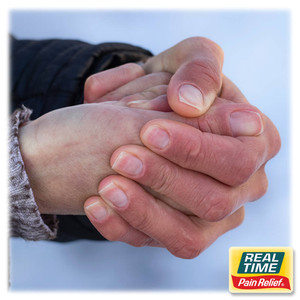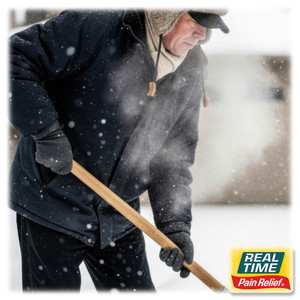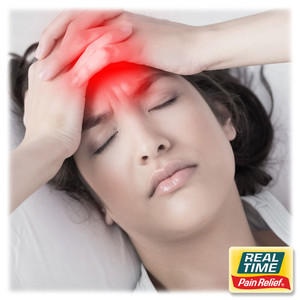10 Tips to Prevent Stiff and Achy Joints in the Morning
3rd Nov 2021
Whether you have some form of arthritis or a little soreness from repetitive injuries, morning is often the worst time for joint stiffness. In fact, stiff and achy joints in the morning are common. For instance, research in the journal BMC Musculoskeletal Disorders indicated that up to 80 percent of people with rheumatoid arthritis experience morning joint pain.
Joint stiffness can develop overnight for a few reasons. For example, swelling may increase in joints after a period of inactivity, such as when you are sleeping. Weak tendons and muscles may also tighten overnight, which can make the pain in the joints worse.
If your joints feel stiff or painful in the morning, it can interfere with how you start your day. It might make you move slower and dread getting up in the morning. But achy and stiff joints in the morning do not have to be inevitable. There are several ways you can decrease joint discomfort. Consider some of the 10 tips below to start your day.
#1) Stretch Before You Get Up
A little gentle movement can help loosen the joints. The specific exercises you do may depend on what part of your body is affected. But light stretches in bed are a good place to start. Stretch the affected joints before you get out of bed. Hold each stretch for about 20 seconds. Be careful not to overstretch. Ask your healthcare provider for some targeted stretches.
#2) Take a Hot Shower
A long, hot shower can do more than wake you up in the morning. The heat and steam may loosen up painful joints. Consider taking a 10-to-20-minute shower to help with achy joints. If you have a handheld shower, direct the spray at the sore joints for even more relief.
#3) Add a Bath Bomb
Instead of a morning shower, if you have the time, soak in the tub in the morning. Adding a bath bomb may also help reduce joint stiffness. The heat from the bath helps promote blood flow to the joint, which may reduce stiffness. Adding a bath bomb provides additional pain relief without medications. Choose a bath bomb with natural ingredients, such as arnica, Epsom salt, and chamomile that ease stiffness and may reduce pain. Add the bath bomb to a tub of warm water and relax for about 20 minutes.
#4) Warm Clothes in the Dryer
For a little extra heat to ease joint discomfort, place your clothes in the dryer while you get ready in the morning. Slipping on warm clothes right from the dryer can help ease stiffness, especially on a cold day.
#5) Use a Topical Pain Relief Cream
Use a topical pain relief lotion to ease morning joint achiness and stiffness. The best pain relief lotion should contain natural ingredients that decrease inflammation, discomfort, and stiffness. Look for ingredients, such as menthol, turmeric, and glucosamine. Keep a topical pain relief cream on your nightstand and apply it before you get out of bed, or apply it liberally after a hot shower.
#6) Consider Dietary Changes
Although there is no exact diet for reducing joint stiffness, making certain changes may help reduce inflammation and decrease morning stiffness. Avoid foods that may contribute to inflammation, such as refined carbohydrates, sweetened drinks, and fried foods. Consider adding foods that may help decrease inflammation, such as nuts, salmon, and avocadoes.
#7) Go for a Short Morning Walk
Exercising with sore, stiff joints may seem like the last thing you feel like doing. But gentle exercise and getting moving may help decrease overall joint discomfort. Even a short 10 or 15-minute walk around the neighborhood can help get blood flowing and ease stiffness.
#8) Look into Complementary Therapies
In some cases, complementary therapies, such as essential oils or massage, can help ease joint stiffness. Even a massage device, such as a roller, may help decrease achiness. It might take a little trial and error to see what works best for you.
#9) Use an Electric Blanket
Try using an electric blanket or heated mattress pad to keep your joints warm while you sleep. The warmth may help decrease morning joint pain. Just be sure to avoid temperatures that are too hot and can lead to burns.
#10) Plan Ahead
If you have joint pain and are slow to get moving in the morning, a little planning can help. For example, try to get up about 30 minutes earlier to allow enough time in your routine to do some of the above tips. If you have to rush in the morning, it may make it hard to take a long, hot shower or find the time to stretch. By planning to incorporate some of the tips above, you might be able to reduce your morning joint pain and stiffness. Easing into your day may also help decrease stress and make it easier to cope with aches and pains.
Pain Relief You Can Trust® Since 1998
For over 20 years, families across the U.S. have turned to Real Time’s lotions and creams for PAIN RELIEF YOU CAN TRUST®. From Lifestyle Essentials, through our Nujuvena line, to Pain Relief Formulas, Real Time has you covered. LEARN MORE
Sources:
- https://health.clevelandclinic.org/waking-up-stiff-how-morning-gel-can-affect-your-joints-tips-for-relief/
- https://pubmed.ncbi.nlm.nih.gov/24476506/
- https://www.health.harvard.edu/pain/what-makes-my-joints-stiff-in-the-morning
- https://www.health.harvard.edu/staying-healthy/foods-that-fight-inflammation





